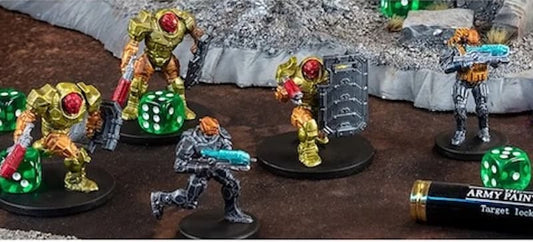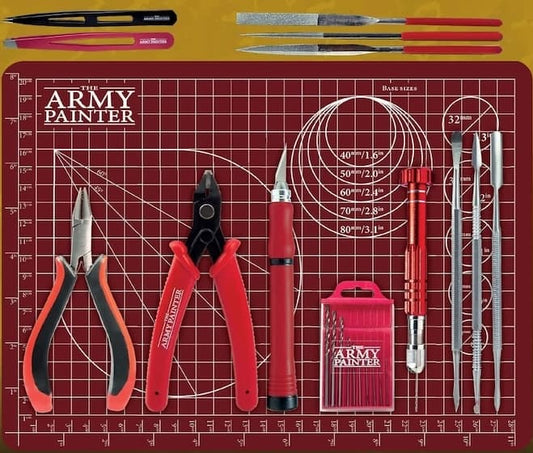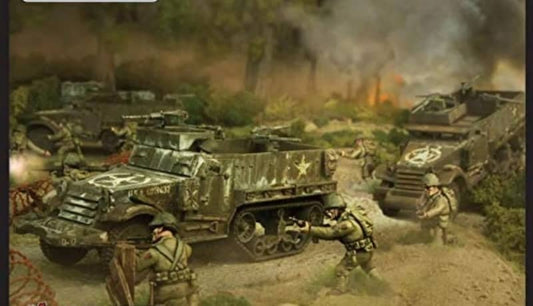Just bought your first Warlord Games set? Congratulations on taking your first step into the enchanting world of miniature wargaming. Your next step is to get familiar with the basics of assembling your miniatures, setting the scene, and mastering the foundational rules. This guide lays it all out in clear, easy steps, ensuring you're well-prepared for your debut on the tabletop battlefield.
Classify Your Wargaming Persona
The miniature wargaming world attracts an array of enthusiasts, each bringing their unique flair and motivation to the table. Recognizing your primary interests can help streamline your approach and make the experience more rewarding. Here's a breakdown to help you identify where you might fit:
- Gamer: You play to win, but you also value aesthetics. Your primary focus is on strategizing and winning games, but you don’t neglect the appearance of your miniatures. While they may not be museum-worthy, they're painted to a decent "tabletop standard." These miniatures might not win a detailed inspection contest, but from a distance, they make the game vibrant and visually engaging.
- Painter: The artistry of painting captivates you. Every miniature is a canvas, and while gaming might intrigue you, it's secondary. You dedicate most of your time perfecting the intricacies of your figures, appreciating every shadow and highlight. The game is a bonus, but the real reward is in the art.
Whether you lean more towards gaming, painting, or a balance of both, understanding your personal inclination ensures you invest your time and resources effectively, reaping the maximum enjoyment from the hobby.
Understand the Game Mechanics
Every tabletop wargame has distinct mechanics and rules. These guidelines determine how each game unfolds and how you, the player, interact with it.
Choosing a game system tailored to your experience level ensures a smoother introduction to the hobby. Beginners might lean towards games with streamlined rules, ensuring quick play and easy comprehension. On the other hand, veteran players might gravitate to games with nuanced mechanics, relishing the depth and strategy they offer.
For instance, Warlord Games’ Konflikt '47 goes into an alternative history mixed with eerie supernatural elements, which can be enticing for those who enjoy a twist on traditional warfare. Conversely, its Cruel Seas game set takes you into the heart of World War II naval combat, demanding both tactical foresight and knowledge of maritime strategy.
Learn to Use the Terrain
In wargaming, terrain isn't just decoration. Hills, forests, rivers – they serve as the battleground's backbone. Every ridge or waterway can be the difference between victory and defeat. For newcomers diving into wargame sets, grasping the strategic depth terrain offers is essential.
Start simple. Lay out a gaming mat, and pepper it with fundamental terrain pieces: rolling hills, sturdy trees, and babbling brooks. As your confidence builds and your understanding deepens, venture into introducing more intricate terrain elements, such as buildings, bridges, or fortifications. Each element not only enriches the visual appeal but can drastically alter tactics, dictating where units can move, take cover, or gain an advantage, shifting the very dynamics of each skirmish.
Assemble Your Army
In Warlord games like Bolt Action, Black Powder, or Hail Caesar, a thoughtfully crafted army makes all the difference. First, pick a game and faction that speaks to your interest, be it WWII tactics or the grandeur of ancient battles. Once settled, resist the temptation to buy an overwhelming number of troops.
Focus on core units that offer a good balance for your chosen faction. This could mean infantry squads in Bolt Action or cavalry in Black Powder. As you get comfortable, introduce specialized units for strategic depth. Remember, a smaller, well-balanced army often outperforms a larger, disjointed one.
Some tips to keep in mind:
- Prioritize core units for a strong foundational force
- Balance your selection with both ranged and melee units
- Reflect on a unit's role and ensure varied capabilities
- Avoid too many elite units (they can limit your troop numbers)
- Regularly play-test your army to identify and fill gaps
Paint Away
Palette choices matter, especially for the budding gamer. If you've chosen a game set, such as SPQR, imagine the historical Roman era. Think of the vibrant red tunics of the Roman legions or the rustic browns and tans for their sandals and equipment.
Start with the right tools and materials. Warlord Games offer a range of paints and brushes tailored to their miniatures. Using these ensures consistency in color palette and quality, leading to a better painting experience. Remember, it's not just about the hue, but the quality of the paint and brush.
As you begin, patience is key. Before you get to the primary legions of SPQR or the intricate details of Bolt Action troops, practice on simpler figures. They allow you to hone your skills without the pressure of perfection. Over time, with consistent practice and the right tools, your miniatures will become vibrant centerpieces in your tabletop battles.
Start Playing
Launching into a wargame can feel a bit like the first plunge into a cold pool – exhilarating once you’re in. Before you deploy those first units, invest time into understanding the game rules. Trust us, no one likes stopping to review the rules every few minutes.
Once on the battlefield, communication makes the game. Check with your opponent about any rule clarifications or strategic nudges. It keeps the game smooth and the atmosphere light. And if your first outing feels less victorious, that's alright. Remember, every game, win or lose, crafts you into a better commander. Embrace the challenge, enjoy the experience, and let the dice roll.



